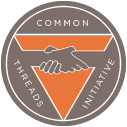 Employment references have been one of the more volatile areas of business communication in recent years, and the situation is often frustrating for everyone involved. With the threat of lawsuits over negative references, many employers now offer nothing more than confirmation of dates of employment. On the other side of the equation, recruiters are frustrated by the time and work it can take to track down anyone willing to provide balanced feedback on candidates, and candidates are sometimes frustrated by their inability to provide meaningful references.
Employment references have been one of the more volatile areas of business communication in recent years, and the situation is often frustrating for everyone involved. With the threat of lawsuits over negative references, many employers now offer nothing more than confirmation of dates of employment. On the other side of the equation, recruiters are frustrated by the time and work it can take to track down anyone willing to provide balanced feedback on candidates, and candidates are sometimes frustrated by their inability to provide meaningful references.
In response to the challenges faced by prospective employers, a new class of software is helping recruiters get the information they need to make informed hiring choices—and the implications for job seekers are huge. These systems essentially automate a confidential online survey of a candidate's references. The candidate provides names and email addresses of a specified number of references, and the references then respond to a standardized questionnaire. As this article in Workforce Management explains, employers who use the systems report dramatic increases in the quantity and quality of information they're able to get on candidates. Given an opportunity to provide confidential feedback, past employers and other references are much more willing to offer candid assessments.
Now for the implications for job seekers, particularly less-experienced workers who might not appreciate just how long a bad reputation can follow one throughout a career. Employers who use these systems require candidates to provide references, and those references are protected by anonymity (and liability waivers, in at least one of the systems we looked at). The chances of botching up a job and moving on with no damage to one's career are going to shrink as more employers adopt these tools. Students should be aware that even those part-time and entry-level jobs they can't wait to escape from could come back to haunt them if they leave behind a negative reputation.
On the plus side, these systems should benefit employees who exhibit professionalism and dedication to the job, because their former managers will be free to provide in-depth information to future employers.
 One of the more intriguing aspects of age diversity in the workplace is the degree to which technology has shaped the communication habits and preferences of each generation. For instance, Generation Y (roughly speaking, those born between 1981 and 1995) has a well-documented preference for electronic media, from texting to IM to social networking. Coupled with a generally more casual approach to information privacy, this reliance on electronic media can clash with the habits and expectations of older workers and managers.
One of the more intriguing aspects of age diversity in the workplace is the degree to which technology has shaped the communication habits and preferences of each generation. For instance, Generation Y (roughly speaking, those born between 1981 and 1995) has a well-documented preference for electronic media, from texting to IM to social networking. Coupled with a generally more casual approach to information privacy, this reliance on electronic media can clash with the habits and expectations of older workers and managers. When Google wanted to alert users to significant changes in its online privacy policy, it didn't couch the news in the formal language that corporations normally use for major policy announcements. Instead, it used phrases such as "This stuff is important" and "This stuff matters."
When Google wanted to alert users to significant changes in its online privacy policy, it didn't couch the news in the formal language that corporations normally use for major policy announcements. Instead, it used phrases such as "This stuff is important" and "This stuff matters." Some of us have been around long enough to remember when business communication was a fairly specialized activity. Writers wrote, typesetters set type, art directors designed, graphic artists created, photographers took photos, and production specialists equipped with X-Acto knives combined all these elements on the page.
Some of us have been around long enough to remember when business communication was a fairly specialized activity. Writers wrote, typesetters set type, art directors designed, graphic artists created, photographers took photos, and production specialists equipped with X-Acto knives combined all these elements on the page. Newsfeeds from blogs and other online publishers can be a great way to stay on top of developments in any field. However, anyone who has signed up for more than a few RSS feeds has probably experienced the "firehose effect" of getting so many feeds so quickly that it becomes impossible to stay on top of them. Moreover, when a highly active publisher feeds every new article, from the essential to the trivial, the reader is left to sort it all out every day.
Newsfeeds from blogs and other online publishers can be a great way to stay on top of developments in any field. However, anyone who has signed up for more than a few RSS feeds has probably experienced the "firehose effect" of getting so many feeds so quickly that it becomes impossible to stay on top of them. Moreover, when a highly active publisher feeds every new article, from the essential to the trivial, the reader is left to sort it all out every day. Happy New Year! From everyone on the Bovée-Thill team, we wish you a successful new term.
Happy New Year! From everyone on the Bovée-Thill team, we wish you a successful new term. From Black Friday to Small Business Saturday to Cyber Monday, business communication over the Thanksgiving holiday weekend is all about buy, buy, buy.
From Black Friday to Small Business Saturday to Cyber Monday, business communication over the Thanksgiving holiday weekend is all about buy, buy, buy. You know that feeling when the words don't quite capture the spirit of your intended message, but words are all you have?
You know that feeling when the words don't quite capture the spirit of your intended message, but words are all you have?
